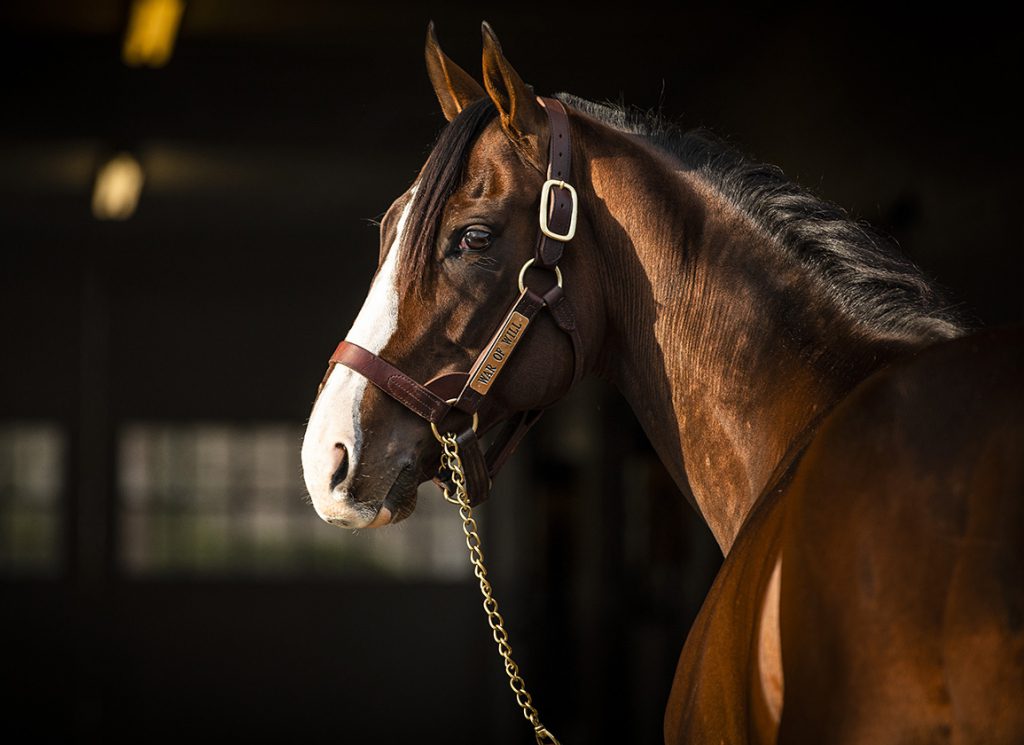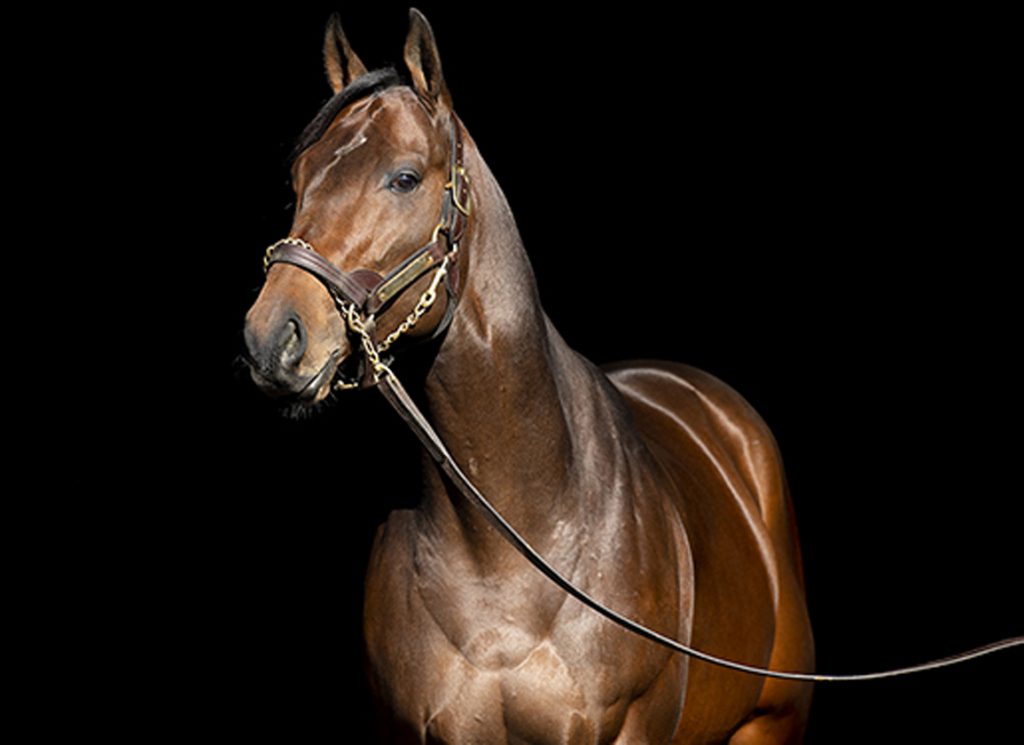The TDN sat down with Irish pinhooker Norman Williamson for this last installment in the series presented in cooperation with the Consignors and Breeders Association (CBA). Through conversations with buyers and sellers, the series looks to contribute to the discussion on radiograph findings and their impact on racetrack success.
The Oak Tree Farm of retired National Hunt jockey Norman Williamson and his wife Janet is responsible for Classic-winning graduates on both sides of the Atlantic. The operation sold future 2019 GI Preakness S. winner War of Will (War Front) and 2022 Irish 2000 Guineas winner Native Trail (GB) (Oasis Dream {GB}) at Arqana Breeze-Up Sales. The Williamsons' search for pinhooking prospects encompasses the international stage, as well.
“The world has become a smaller place,” Norman Williamson said. “I've been doing this for 19 years or so and when I first went to America, there were a huge amount of horses that you wouldn't bother looking at, especially the dirt-bred horses. But now, your list tends to be a lot longer. The past couple of years, we've had a sale in Dubai. We are selling horses around the world basically, to Saudi and back to America. I suppose the best example was War of Will. He was pinhooked by an Irishman, he sold in France and he gets back to America to run in the Kentucky Derby and win the Preakness. That wouldn't have happened 20 years ago, I don't think, because people were thinking, 'We will go to America and just buy the turf-bred horses.' Now I think we can look at most horses.”
For Williamson, the vet report goes hand-in-hand with consideration of a yearling's potential price tag.
“We go through the full vetting,” he said. “Sometimes it will depend on the price range, as in what you can forgive and what you can't forgive. I can't forgive bad knees or if the X-rays of his knees aren't great. For breezing, it tends not to work. They get knee pain and you're in trouble from an early stage. So there are certain things that you can put up with, but the price also has to come into account. If you are going to give what we call good money for a horse, well you need to have a clean set of X-rays because it's very important at the other end.”
Williamson said buying horses to resell automatically eliminates some horses with vetting issues.
“I would have put up with plenty of things, only when I am re-selling, those people won't,” he said. “I have a horse that is breezing well and he's 100% sound, but if his X-rays aren't clean they are going to say, 'Well he's going to go lame at some point.' Most of the breeze-up people know if you get a horse to a breeze and he's very sound, whatever his issues are, they are probably not going to come against him if he can take all of that early. We put up with a bit, but because of the other end–for instance, if you are selling to Hong Kong, they have to be absolutely squeaky clean and also if it's a big-money horse, they have to be clean. But it's not necessarily the answer to soundness, in my opinion.”
He continued, “There are quite a few things that wouldn't bother me in the slightest. Sesamoiditis, for me, is just a bit of time. I have never had any trouble with it. And every single horse seems to have had sesamoiditis. Everyone mentions sesamoiditis, but if the joints and legs handle well and they are tight and they look good, I don't tend to have any problems with them. You can't just go galloping tomorrow morning. You've got to take your time. But I haven't had any trouble with it.”
And vet issues are always subjective.
“As we all know, some vets are more critical than others,” Williamson said. “It is the same process, but you tend to find the racehorse vets, as in people who are going in and out of trainers' yards every morning, tend to accept a lot more because they are seeing it every day. If you just have a vet who is sent there to make the horse squeaky clean, well he won't pass much. But the guys that really see these 2-year-olds and see what they can put up with and they don't tend to go lame on things, they will pass them. You'll be passed with a comment. So it does depend quite a bit on the vet. But again going back to it, if you're looking for a big result and big money, you need to have them pretty good.”
When he returns to sell juveniles in the spring, Williamson acknowledged there are some buyers who will take his assessment of his horses into consideration, in addition to the vet report.
“You can certainly talk to trainers and to some of the agents,” he said of discussing the impact, or non-impact, of perceived vet issues in horses he has been training all winter. “But you've also got to realize that some of these agents are employed by some wealthy businessmen and if the horse does go wrong, they have to go back and say whatever. So you do build up a rapport with your trainers and with your customers. And yes, they do start to believe you, because if you don't tell the truth, you're not going to be in business for very long. The trainers can put up with a certain amount, and will say, 'that doesn't bother me' or 'that doesn't bother me.' But it's a tricky one, the agent might understand you and might totally believe you, but he's got to go to a businessman who is investing his money. So I can see where they are coming from as well. They want everything squeaky clean from their point of view. If you stand there and tell somebody we think this is a good horse and he has probably breezed five times and he hasn't been made to go very fast and I really like him, in time, if the horse is a good horse, they will be back to you.”
The all-important clock dominates the under-tack shows at 2-year-old sales in the U.S. and, while a :9 3/5 furlong work might turn heads in Ocala, there is no official timing at the European breeze-up sales. The difference reflects the different nature of racing in Europe versus America, according to Williamson.
“I think, from a horseman's point of view–and I used to ride myself–European racing is very different from American racing,” Williamson said. “They tend to start off slow and they tend to quicken up–American turf racing is now like it, they quicken off the bend. But dirt racing looks to me like it's the horses that go the fastest for the longest. They break from the gate and they go very quick. Breezing probably doesn't make much difference to that type of horse, but if you have a horse here and you want him to go a mile or a mile and a quarter, and you train him to be a clock horse like America, you'd end up with nothing. You'd spend the next 12 months trying to get him to settle. You can't jump off in a turf race here and have the horse run keen with you because he's not going to finish out. So we tend to do it a bit slower and a bit more gradual. But of course there are unofficial timings now and we still have to do a certain time. You won't get away with a slow horse. But I don't think official times will ever work in Europe.”
Without the reliance on the clock, nuance becomes more important at European breeze-up sales.
“There are people who read it very different,” Williamson said. “Some people say, 'Oh, he did a good time,' and some people will say, 'I didn't like his stride.' Whereas in America, it seems to be the fastest is the best, the fastest makes the most money. I don't think any of us breeze-up people in Europe want a professional clock because we tend to train them like that. And you have a huge amount of horses in America breezing in blinkers. I don't think any horse has ever breezed in blinkers in Europe. Straight away, it would be like a red rag, they'd say 'What's wrong with him?' Which tells you the difference. They don't need to see them go that fast here, but once they have nice action and they do it well at a nice dial, I think it's better than trying to break the clock.”
Not trying to beat the clock also allows European pinhookers added time to allow yearlings to overcome issues that their American counterparts might not have the luxury of waiting out.
“I suppose the one thing you can take out of it, you can slightly, as a pinhooker, buy a horse that's a little more backward maybe as a yearling,” Williamson said. “I don't mean necessarily backward, but maybe a big horse. And you can gradually take your time and then if he has natural ability, well he's going to breeze well anyway. In America, they seem to be the big strong horses with big backsides that people buy for breezing. But here, you can buy a horse that looks like a 1 1/4-mile horse to go breezing and give him that little bit of time. I don't really know anything about the American set-up, but here you can [give them extra time]. You still put them into the routine and get them going into the system, but they don't have to be galloping to break a clock. So you can actually give them a week off here or there and a few days off and maybe have a trot out tomorrow rather than go off cantering or galloping again. So you can forgive a little.”
Asked what changes he might like to see in the yearling sales in America, Williamson said, “You need to keep the horsemanship in it. There are certain things–like every single vendor in America mentions sesamoiditis. Well, it's up to yourself to take a chance. We've all bought horses over the years that had moderate X-rays and have been perfect through their racing careers. So, it's not the end of the world, but you are taking a risk.”
Check out previous installments of The X-Ray Files: with Tom McCrocklin, David Ingordo, Liz Crow, Ciaran Dunne, Bill Heiligbrodt, Wesley Ward, and Elliott Walden.
The post The X-Ray Files: Norman Williamson appeared first on TDN | Thoroughbred Daily News | Horse Racing News, Results and Video | Thoroughbred Breeding and Auctions.




